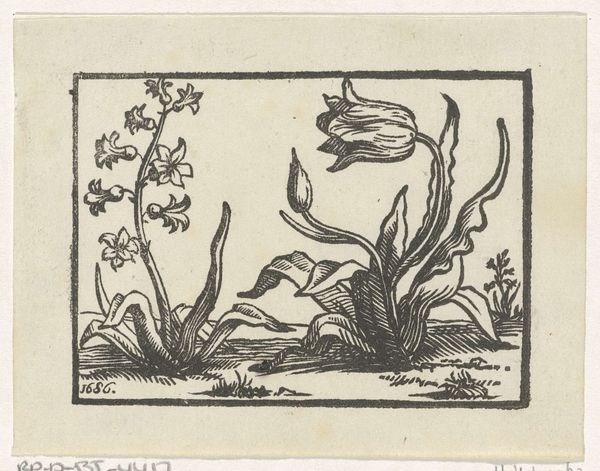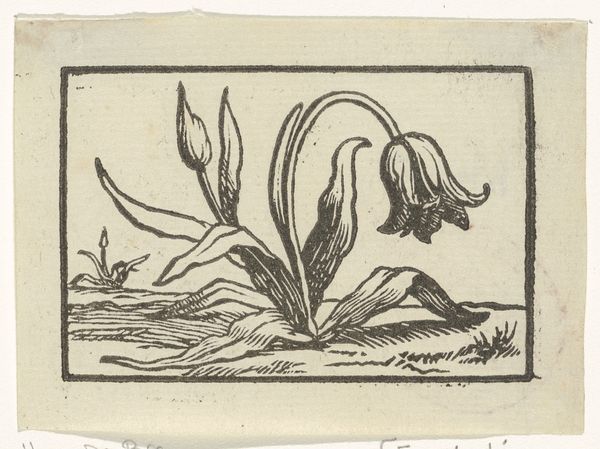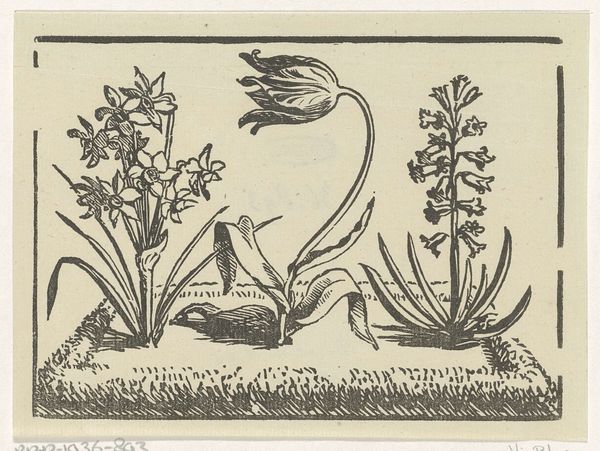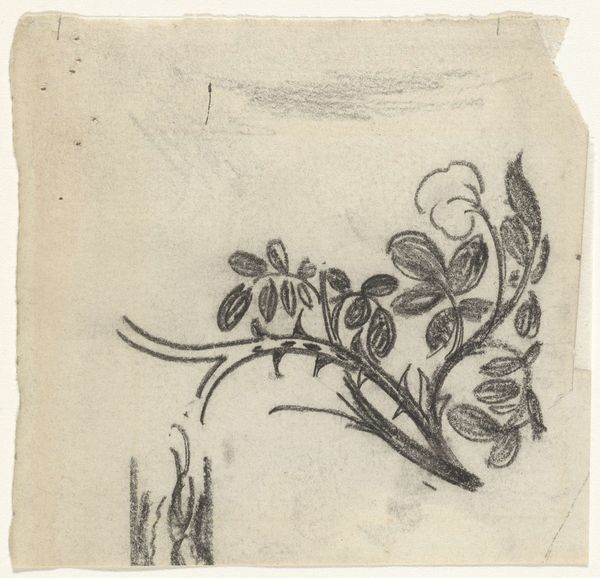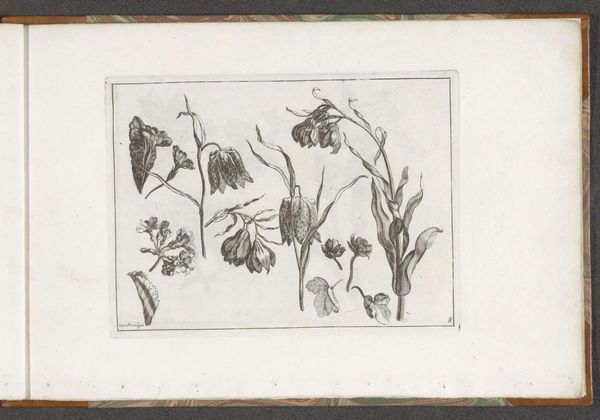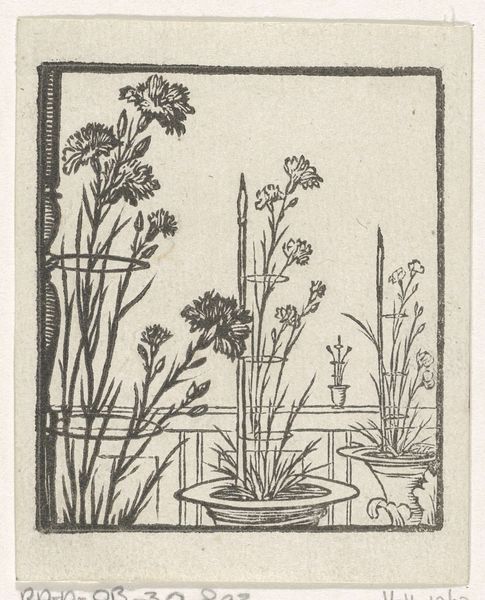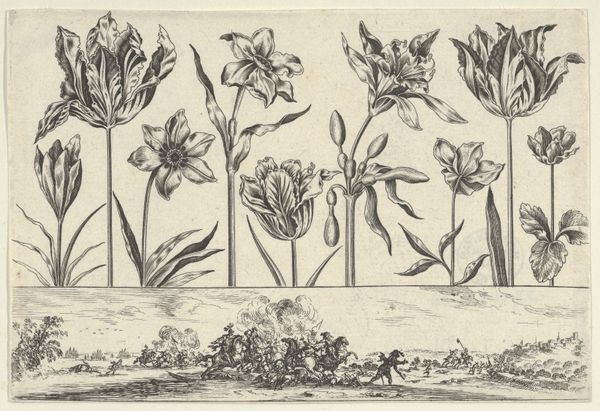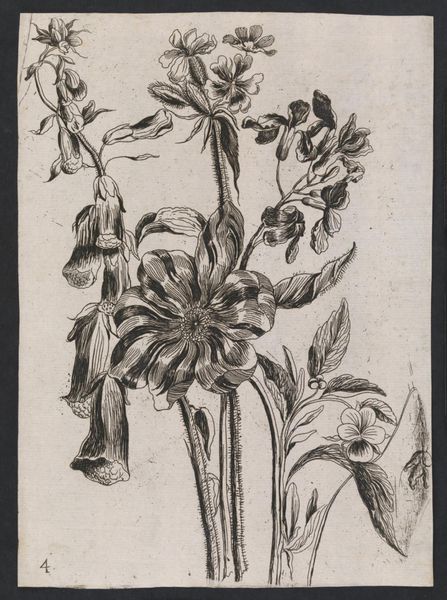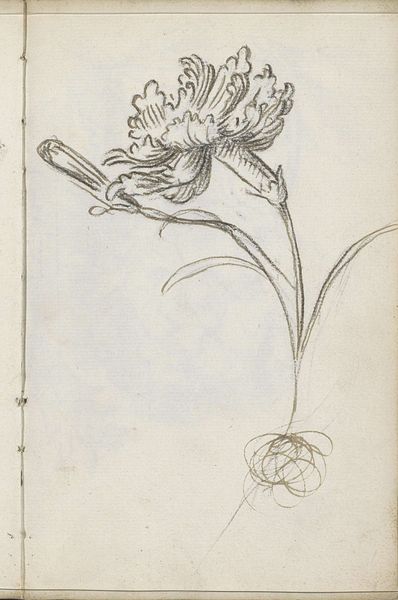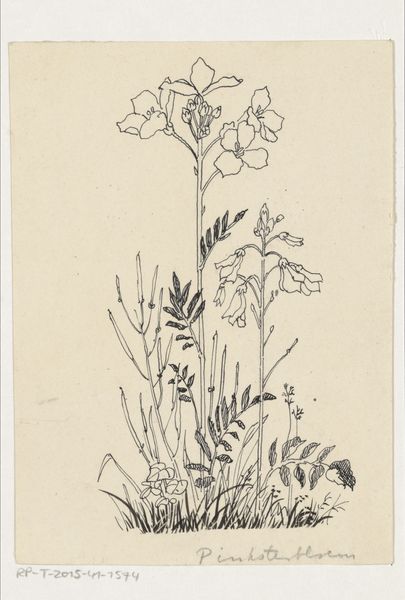
drawing, print, paper, ink, woodcut
#
drawing
#
dutch-golden-age
# print
#
paper
#
ink
#
woodcut
#
genre-painting
Dimensions: height 60 mm, width 85 mm
Copyright: Rijks Museum: Open Domain
Curator: Let's turn our attention to this captivating print from 1661 by Dirck de Bray, entitled "Tulp in bloei," which translates to "Tulip in Bloom". Editor: It's strikingly simple. The heavy black lines of the woodcut give it a somber quality, almost meditative, despite depicting a flower. The droop of the single blossom feels weighty. Curator: That's interesting. The tulip, during the Dutch Golden Age, became associated with the transience of beauty, excess, and a reminder of mortality in the face of the infamous Tulip Mania. Editor: Of course, that resonates! You can see the symbol of “memento mori” at work. The almost skeletal, bare presentation mirrors this underlying concept, acting as a reminder about life’s ephemeral qualities. Even the earth it grows from looks bleak and barren. Curator: De Bray himself lived through periods of both financial prosperity and severe financial hardship, which would certainly inform his views on excess. Given that some scholars link Dutch flower paintings with prosperity and national identity in a globalizing world, this rendering in printmaking perhaps makes it more widely accessible and democratizes access to an affluent object of status, no? Editor: I think that reading has legs. A single flower rendered starkly like this… almost a photographic negative in some ways… becomes universal. Stripped of opulent color, the meaning shifts to wider themes of beauty and life’s precariousness, independent of monetary privilege. The contrast between what was, what is, and what will be can make you really feel the precarity of existence. Curator: And it invites conversations about environmentalism as well, particularly given the exploitation of nature during that period, and ours. Thank you, that’s quite the way to look at a humble plant, I am glad to hear your take. Editor: My pleasure. I find its haunting, stripped-down nature lingers in my mind long after I turn away, something more than just botanical art.
Comments
No comments
Be the first to comment and join the conversation on the ultimate creative platform.
